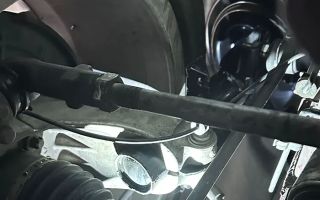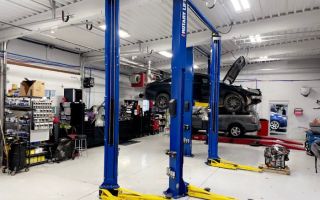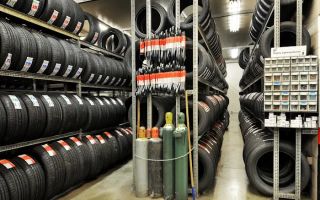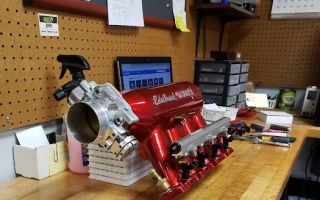How to Diagnose Car Engine Issues: A Step-by-Step Guide
Having your car break down unexpectedly can be frustrating and stressful, especially if you're not sure what's causing the problem. As someone who's had my share of car troubles, I know the importance of diagnosing engine issues early to avoid costly repairs down the line. The good news is, many common engine problems can be identified and even fixed by understanding a few basic diagnostic techniques. In this guide, I’ll walk you through the essential steps on how to diagnose car engine issues, so you can troubleshoot and potentially fix the problem yourself before heading to the mechanic.

Walter's Auto Repair
5508 Atlantic Ave, Long Beach, CA 90805, USA
1. Listen for Unusual Noises
One of the first things I do when I suspect something’s wrong with my car’s engine is to listen closely for unusual sounds. The engine can tell you a lot about its condition just through the noises it makes. Here are a few sounds to pay attention to:
- Knocking or Pinging: This might indicate low-quality fuel, timing issues, or problems with the engine’s internal components. If you hear this sound, it’s essential to check the engine’s oil levels and fuel type.
- Squealing or Whining: These sounds often point to issues with the serpentine belt, alternator, or power steering. A loose or worn-out belt can create a high-pitched noise that shouldn’t be ignored.
- Grinding: If you hear grinding noises, it could signal problems with your engine’s pistons, bearings, or the transmission.
Paying attention to these sounds is an excellent first step in diagnosing what might be wrong with your engine. It’s always a good idea to make a note of the noises you hear and when they occur, as this information can be valuable when you consult a mechanic.

Nava Auto Repair
38950 30th St E C, Palmdale, CA 93550, USA
2. Check for Warning Lights on the Dashboard
Modern cars come equipped with a variety of sensors that monitor the health of your engine. If something is amiss, your car will likely display a warning light on the dashboard. These lights are often your first indicator of a problem, and each light corresponds to a different issue. Here are some key lights to watch out for:
- Check Engine Light: This is one of the most common warning lights, and it can be triggered by many issues, including engine misfires, catalytic converter problems, or faulty sensors. When this light comes on, it's important to get a diagnostic test.
- Oil Pressure Light: If this light comes on, it indicates low oil pressure, which can be dangerous for your engine. Ensure your oil levels are correct and check for leaks immediately.
- Temperature Warning Light: This light indicates that your engine is overheating. It could be due to a coolant leak, faulty thermostat, or other cooling system issues.
While the dashboard lights can provide a lot of useful information, they are only part of the equation. It’s always recommended to have a diagnostic tool, such as an OBD2 scanner, to read the engine codes for a more precise diagnosis.
3. Inspect the Engine Oil
Oil is crucial for keeping your engine running smoothly, so checking your engine oil is a must when diagnosing car engine issues. Regular oil changes are vital for engine performance, but if the oil is old, low, or contaminated, it can cause a host of problems. Here’s how to check your oil:
- Check Oil Level: Use the dipstick to check the oil level. Low oil can cause your engine to overheat and wear out faster.
- Examine the Oil Condition: The oil should be a clear golden color. If it’s dark or gritty, it could be a sign of engine wear or the need for an oil change.
- Look for Oil Leaks: Check around the engine and under your car for any visible oil leaks. Leaks could indicate problems with seals, gaskets, or oil lines.
If your oil is low or dirty, a simple oil change could improve your engine’s performance and prevent further damage.
4. Perform a Visual Inspection of the Engine
Sometimes, diagnosing engine issues is as simple as looking around the engine bay. While the engine is off, pop the hood and inspect the following:
- Belts and Hoses: Check for cracked, frayed, or worn-out belts and hoses. These parts are essential for proper engine function, and any issues could lead to overheating or other problems.
- Fluid Leaks: Look for any signs of leaks, such as puddles of coolant, oil, or transmission fluid under the car. Fluid leaks can often be a sign of a more significant issue.
- Battery Condition: Check the battery terminals for corrosion or loose connections. A weak battery can cause electrical issues in your engine.
These visual checks can provide quick insights into potential problems that could be affecting your engine’s performance. If you notice any of these issues, it’s a good idea to fix them immediately before they worsen.
5. Test the Fuel System
If your engine is struggling to start or has poor acceleration, the fuel system could be the culprit. A clogged fuel filter, malfunctioning fuel pump, or dirty fuel injectors can cause issues with the engine’s fuel supply. Here are some signs that the fuel system might be the problem:
- Hard Starting: If your car takes longer than usual to start, the fuel system could be compromised.
- Engine Misfires: A misfire can happen when there’s not enough fuel getting to the engine or the fuel mixture is incorrect.
- Decreased Fuel Efficiency: If your car is consuming more fuel than usual, it could be a sign of a faulty fuel injector or filter.
Testing and repairing the fuel system can be tricky, so if you suspect an issue here, it’s often best to consult a professional mechanic who can properly diagnose and repair the problem.
6. Run a Diagnostic Scan
Once you’ve completed the basic diagnostic steps, it’s time to get a more in-depth analysis of your car’s engine. An OBD2 scanner is an essential tool for modern vehicles, as it can read the engine codes and provide valuable insights into potential issues. Most auto parts stores offer free code scanning, or you can purchase a scanner yourself for home use. Here’s what you need to know about using an OBD2 scanner:
- Plug it into the OBD2 Port: The OBD2 port is usually located beneath the dashboard near the driver’s seat. Plug the scanner into the port to begin the diagnostic process.
- Read the Codes: The scanner will display any error codes, which correspond to specific engine problems. You can look up the codes in the scanner’s manual or online to get more information.
- Fix the Issue: Once you know what the issue is, you can either attempt to fix it yourself or take your car to a professional mechanic.
Using an OBD2 scanner is one of the most effective ways to identify engine issues quickly and accurately. This tool can help pinpoint problems that are difficult to detect through other methods.




























